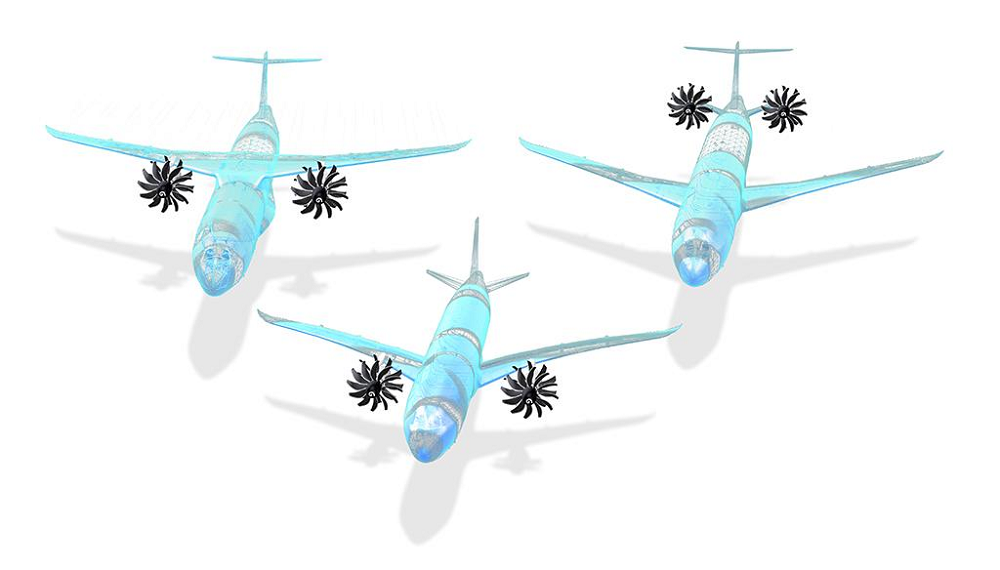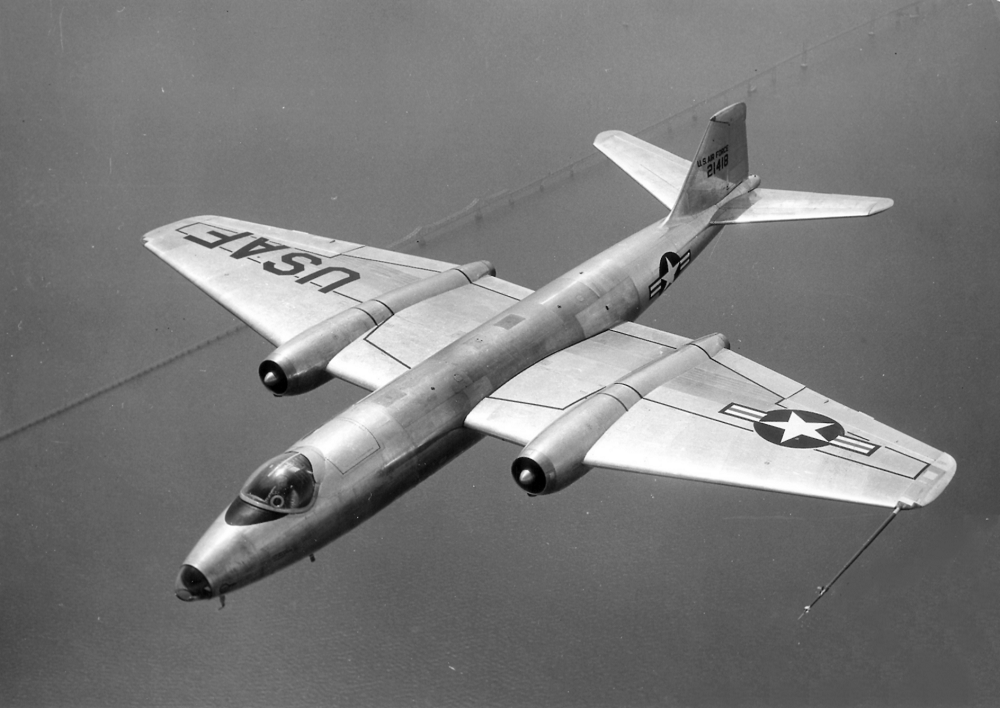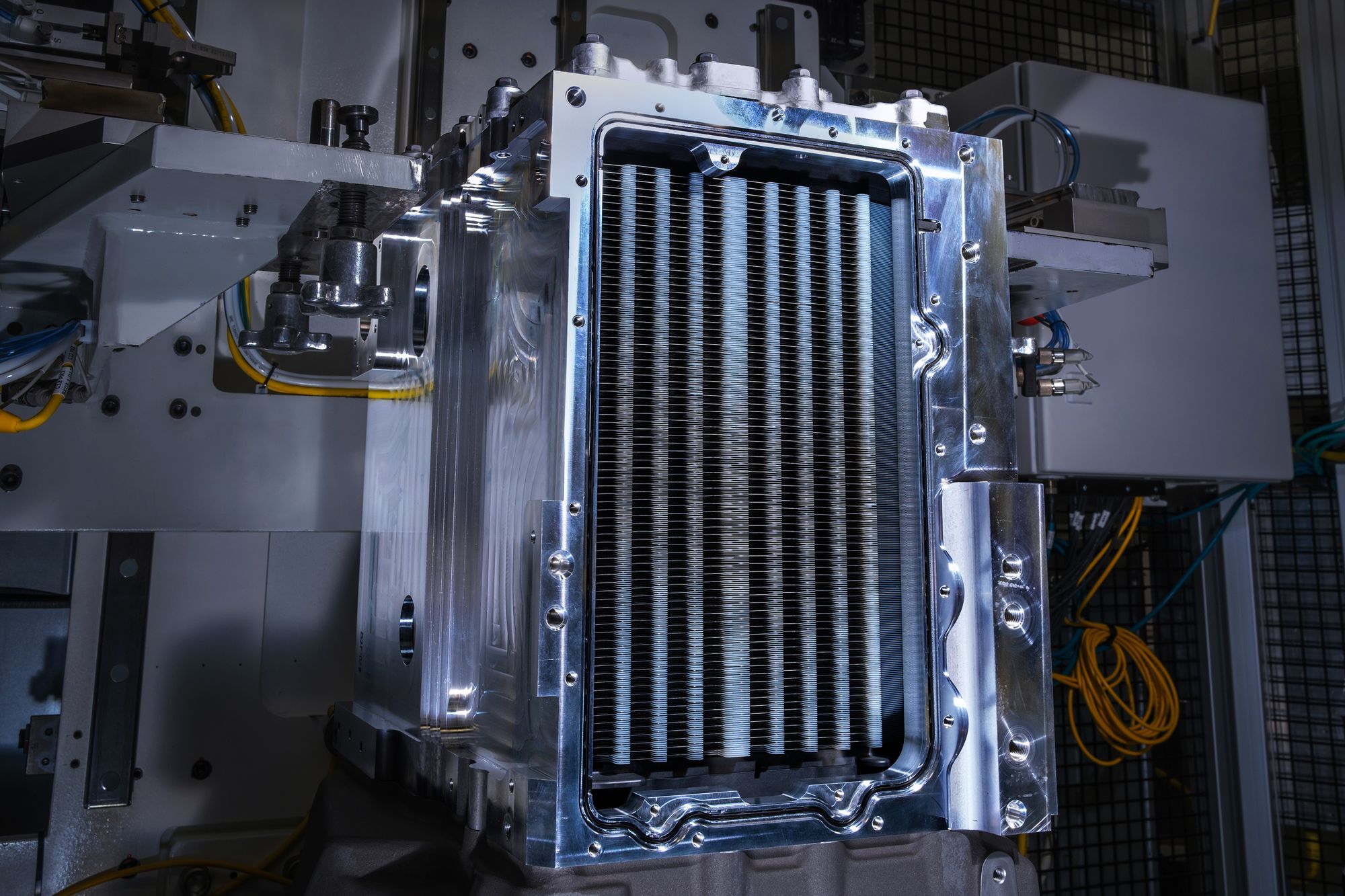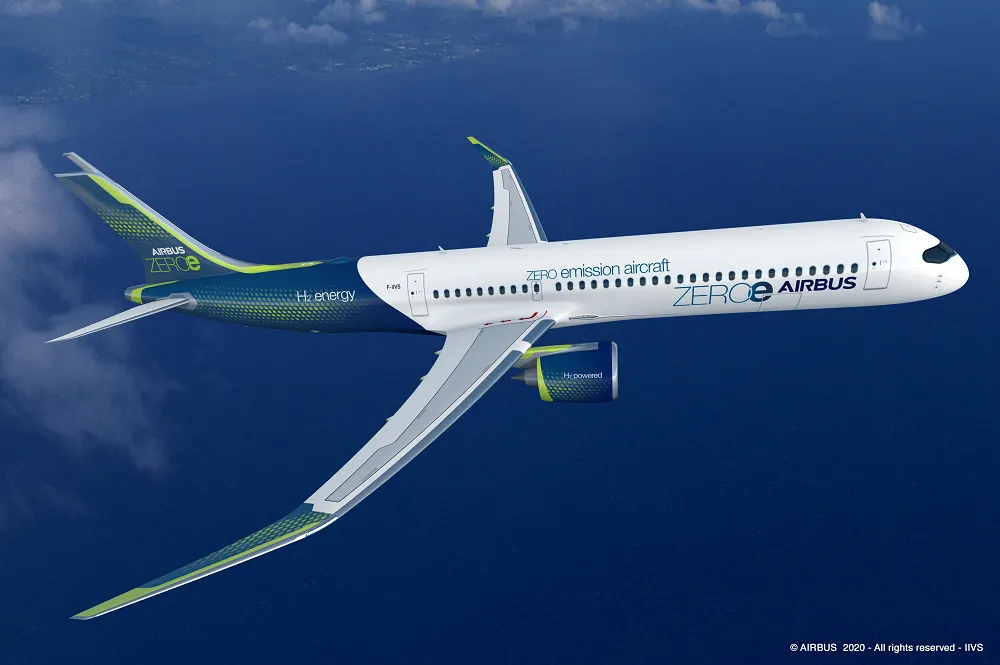Editor's note: Robert Austin examines the potential of hydrogen for the aviation industry in the second of two parts on hydrogen fuel cells. He emphasizes how the world is more than the binary choices of fossil fuels or electric power, as promoted by the media and governments.
If you thought that the zero-emission regulations only applied to vehicles that operate on the ground, you were mistaken! The aircraft industry is also marching into a world free from fossil fuels and aiming at zero emissions.
Aircraft pose even more challenges than automobiles, trucks, buses, construction equipment, ships, and railroad engines. Aircraft have to fly, and that means their weight is a critical factor. Aircraft also only make money when they are flying, so rapid refueling can be a really big factor. For very obvious reasons, aircraft engines must be as close to 100% reliable as possible.


The engine shown in the photos above is called an Open Fan Architecture engine. It is designed to lower both emissions and fuel consumption by 20% and has the ability to operate on Sustainable Aviation Fuel (SAF). (Note, there are several SAF fuels today. The most widely used is a combination of 50% kerosene with 50% biofuel, created by processing things like the byproduct of palm oil production).
It is part of an advanced technology demonstration program for sustainable engines, operated jointly by GE Aviation and Safran. Known as the CFM RISE (Revolutionary Innovation for Sustainable Engines), in addition to looking very different from today’s aircraft engines, it is also a hybrid and can run on electricity.
Why Can’t A Jet Engine Just Burn Hydrogen Instead Of Kerosene-Based Fuel?
Actually, the design of a jet engine requires a relatively small amount of change to run on Hydrogen. Additionally, to get the same range and performance from a hydrogen-burning jet aircraft versus a kerosene-burning jet, it would take about two-thirds the weight of fuel! But before you get too excited, there are issues.

Way back in 1957, NACA (National Advisory Committee for Aeronautics), the precursor to NASA, flew a Martin B57 Bomber with one of its engines burning Hydrogen. In 1988, the Russians converted one of their TU-155 passenger jets to fly with hydrogen power. Both were successful. But, Hydrogen was not a product used regularly in laboratories and industrial processes, so there was no infrastructure to make it commercially available, or at prices that would be competitive with fossil-based fuels. So no one really continued to explore that avenue.
In order to make hydrogen-powered aircrafts a practical reality, it would take two things:
- The first - an aircraft should be specifically designed to be hydrogen-powered. Hydrogen is best stored at rather high pressures, so its tanks have to be strong and should be either cylindrical or spherical and should be housed in the plane’s fuselage, instead of being in the wings as they are in aircraft today.
- The second thing is that hydrogen production has to be significantly scaled up and based around processes using low carbon energy sources like solar, wind, or nuclear electricity. This is by no means impossible. It is just that there was no legislative, moral, or economic reason to step up the production of Hydrogen as a fuel prior to the global warming concerns that have developed during recent decades. Remember, the exhaust coming out of a hydrogen-burning engine is primarily H2O, or water, with relatively small traces of nitric oxide.
While Hydrogen may not power your plane’s engines today, it could power its accessories. How about a hydrogen fuel cell designed specifically for aviation applications? General Motors and Liebherr-Aerospace have agreed to collaborate on developing a HYDROTEC hydrogen fuel cell-based electrical power generation system for aircraft applications. GM is a pioneer in fuel cell technology, and Liebherr has extensive experience integrating technology into aircraft. The two companies are pooling their skills for this project, which has the potential to lower the emissions of aircraft, lower their noise profile, and offer an alternative energy power source for the aviation industry.

One interesting advantage of having a fuel cell on an aircraft is that when it generates electricity by combining Hydrogen with Oxygen from the air, needed to run the accessories (and potentially even the electrics of its engines), its “exhaust” is water. Recognizing this fact, an aircraft could conceivably take off with several hundred pounds less water, knowing that while it is in the air, it will be generating its own water to flush the lavatories! An extra clean energy benefit!
More Than Two Options
I hope last week's story about hydrogen-powered cars and this week's story about hydrogen in aviation have opened your eyes to more than the two options presented to us by the majority of the media and most government agencies. The world is not limited to binary choices. Our choices are not just fossil fuels or electricity.
Hydrogen is the most common element in the Universe! When combined with oxygen in a fuel cell, it can provide electricity on demand. It can also be used as a fuel in what we know today as internal combustion engines, such as automobile and aircraft engines. It can be generated using surplus electricity from wind and solar generators and used as a means of storing energy. And it can be relatively easily transported, stored, and distributed, not unlike the natural gas of today. When used either in a fuel cell or in an engine, its exhaust is water and not a carbon compound. These facts have not gone unnoticed by some of the world’s greatest industrial companies.
A parting thought: perhaps things work best when governments define the problems, in this case, excessive use of fossil fuels and increasing greenhouse gases, and allow the industry to respond in various creative ways.









